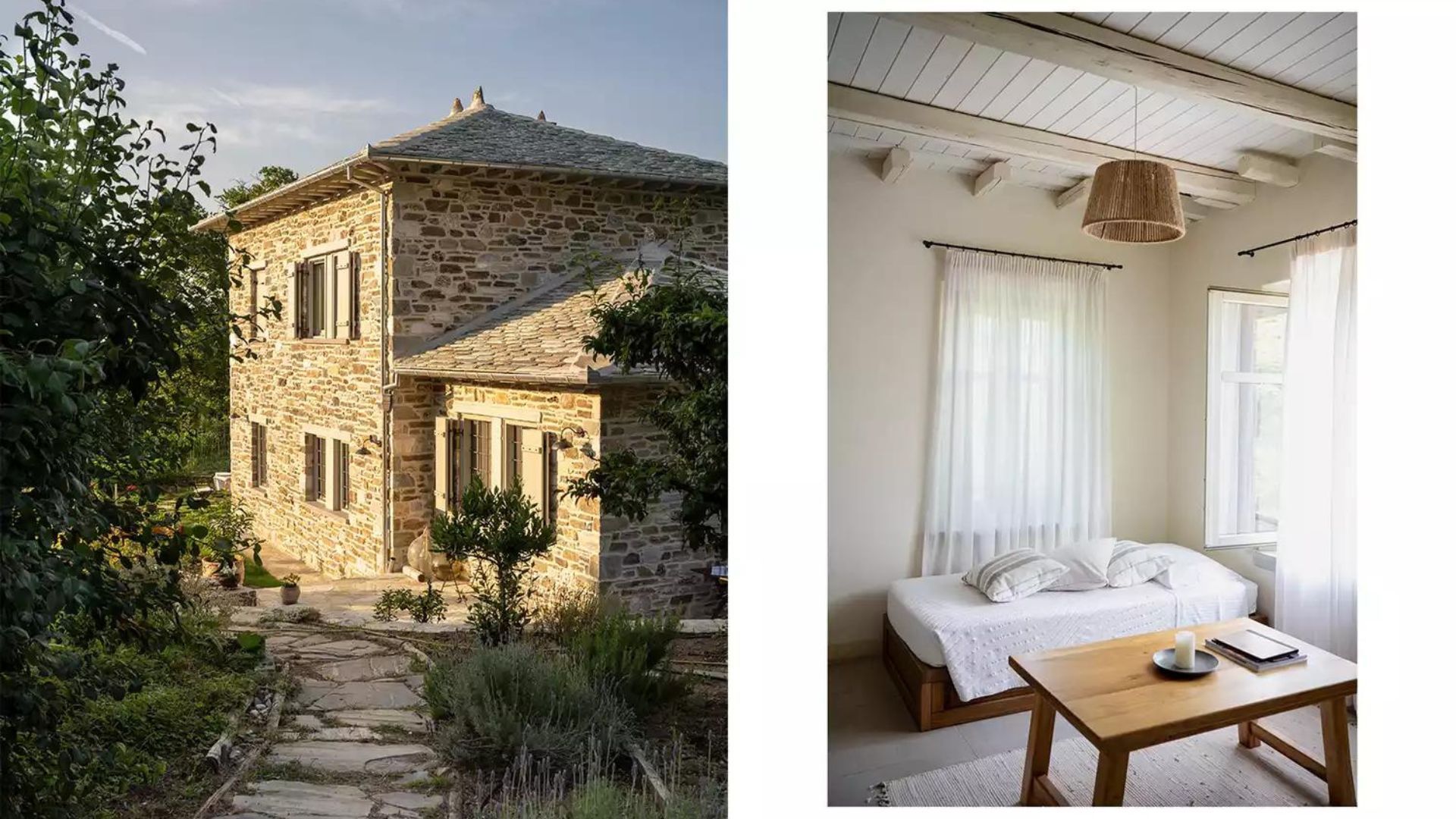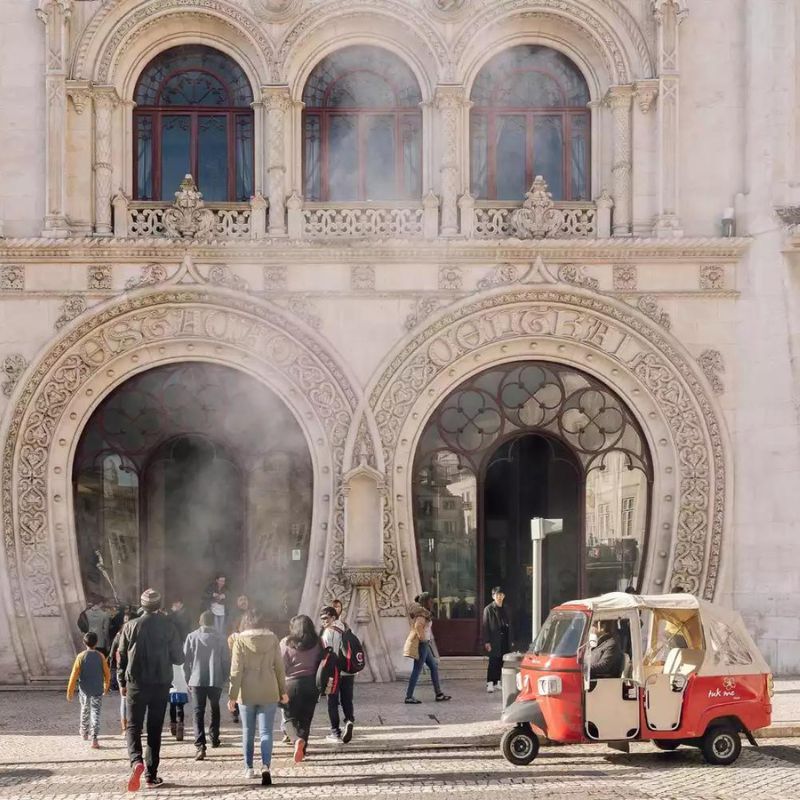
Writing a book is a long, lonely, indoor job. While I was working on “Greek Myths: A New Retelling,” which weaves together classical stories from Homer to Apuleius, that sense of isolation was compounded by the pandemic.
There was no chance of travel, no escape from the island of my London study. But the landscapes of Greece were a crucial reference point for my book, so I spent more time than was necessary Googling sunlit mountains and tangled coastlines, island harbours and flower-dappled meadows — places that, at the time, I could visit only in my imagination.
Pelion is home to some of the most classical Greek myths and cosy boutique hotels

With the book finished and out in the world, and the pandemic more or less consigned to history, I needed to visit the country whose literature and visual culture I’d been immersed in for so long. I decided on a late-summer visit to Pelion. Friends had raved about this unspoiled, mountainous peninsula in Greece, which curves like an apostrophe around the Pagasetic Gulf, north of Athens. Pelion is layered in classical myth: its namesake mountain was the land of the centaurs; and the city of Vólos, which stands at the peninsula’s head, was ancient Iolcos, from where Jason launched the Argo and his quest to claim the Golden Fleece.
When my partner, Matthew, suggested starting the trip by flying to Thessaloniki and visiting Mount Olympus — the mythical home of the Greek gods, where their gleaming palaces stood among the clouds — I was sold. I should say right now that we didn’t climb Olympus — which, at 9,570 feet, is the tallest peak in Greece. Not for me the epic scramble of one of my favourite characters, Psyche, who went in search of her missing husband, Eros, while heavily pregnant, and scaled Olympus in order to tackle her terrifying mother-in-law, the goddess Aphrodite.

It was more restful by far to consider this feat from the comfort of Ktima Bellou, a quietly luxurious hotel with seven rooms and five stone guesthouses on the western side of the mountain. Afroditi Bellou is the managing director of the guesthouse — and, as it turned out, is not only named after a Greek goddess but is also a mythology enthusiast. She reminded me that, according to legend, the nine Muses were born at the base of Olympus, in the region known as Pieria.
Afroditi’s mother is in charge of the kitchen at the hotel, and her father presides over the farm. Konstantinos, Afroditi’s partner, is the sommelier and also served us our delicious breakfasts: cheese pies, house-made bread and preserves, eggs from their own chickens, honey from their hives, walnuts from their trees. Before that daily feast, we would swim a few lengths in the glorious, if bracing, hotel pool, and look out over Olympus’s slopes, hoping for the Muses to strike with inspiration.
Book your stay at Ktima Bellou via Booking.com
Book your stay at Ktima Bellou via Agoda.com
Afroditi recommended walks on the mountain slopes and gave us maps, sending us out one day to try the Phaethon Trail, an 8.5-mile (13.67 km) route that begins in the nearby village of Kokkinopilós. The name of the path is slightly ill-omened since Zeus killed Phaethon with a thunderbolt after the boy failed to control a chariot belonging to his father, Helios, the sun god.
No such fate awaited us, however, as we followed the well-marked trail through a forest of oak, beech, and poplar trees. Afterwards, we drove up to admire the remote chapel of the Prophet Elias, as Elijah is called in Greece, which was built in the 16th century on the slopes of Mount Titaros. From there the great peaks of Olympus spread out in front of us, glimmering and pale in the early evening sunlight, while an eagle, Zeus’s bird, floated languorously by.

After checking out of Ktima Bellou, we took Afroditi’s advice and drove south to the ruins of the ancient city of Dion. The remains of its Hellenistic and Roman buildings lay amid rivulets and lush vegetation. We found the altar on which Alexander the Great made his sacrifices before heading off on his great conquering spree through Asia in the fourth century BC It was a powerful experience: a feeling of touching not myth, but history.
Shop the best travel experiences here
A couple of hours later, we came to the edge of Volos. The grid-planned city is not exactly redolent of ancient myth, except by virtue of its location, since it was almost entirely rebuilt following a 1955 earthquake. But soon, Matthew and I were climbing higher and higher up Mount Pelion, first through olive groves, then apple orchards on the lower slopes, finally reaching stands of richly fruiting chestnut trees.

In my book, I explore the story of Medea, Jason, and the Argonauts, in which the hero tells the princess about his homeland and its “lovely, sheer cliffs that career down into the foaming sea.” The portrait turned out to be accurate. The cosy, nine-room Amanita Guesthouse is made up of a traditional stone house and a couple of apartments, all set in a medicinal herb garden that clings to Pelion’s precipitous slopes.
Today, the villages dotting the mountain are connected by convenient, if precipitously winding, roads. But the old donkey paths that were once the only routes across the peninsula now serve as a network of walking trails. From our guesthouse, we walked to the village of Tsagarada, where a great plane tree has been shading the village square for centuries. From there we could climb directly down to the beach of Damouchari, where we swam in the turquoise water before wandering to its absurdly pretty harbour, overlooked by a couple of simple but lovely fish tavernas. (It is so pretty, in fact, that a scene from the film Mamma Mia was filmed there.) It took 80 minutes to walk down and 90 minutes to struggle back up but, after breathing lungfuls of the salty mountain air and spotting wild autumn crocuses among the scrub, Matthew and I agreed it was worth it.
Pelion in September is remarkably lush and green — no surprise, then, to have a day’s gentle rain. We pulled on raincoats and wandered through the chestnut woods above Tsagarada. Every so often we would come across a clearing and a little city of beehives or a part of the forest floor bursting with wildflowers.
The next morning I showed the owners of the guesthouse, Filaretos and Marianna Psmimmenos, pictures I’d taken of cèpes and a curious fungus that looked like a white egg from which a yolklike yellow globe was emerging. This was Caesar’s mushroom, or Amanita caesarea, Filaretos told us, his eyes lighting up. They were putting on their walking shoes as we headed out; when we returned that night they showed us their spoils: great baskets full of fungi.
Given this tremendous harvest, the obvious thing to do was have dinner at the guesthouse. Served in the garden as a blood moon rose, the meal consisted of pickled fern, rock samphire, and pistachio shoots (the latter a regional delicacy usually eaten with tsipouro, a grappa-like aperitif); local cheese served with black garlic and bergamot chutney; and a deeply flavorful wild-mushroom risotto. We rounded off the meal with yoghurt dressed in house-preserved quince and orange and a bottle of tannin-rich Thessalian Xinomavro.
Pelion is the mythical home of Chiron, the wisest of the centaurs, who lived in a cave in the mountains and educated Achilles, the great hero of the Trojan War, in the healing arts. Surely those elegantly coiled fern shoots would have been exactly what a hungry centaur grazed on. On the slopes of Olympus and on the story-laden peninsula of Pelion, it was only fitting that we had roamed and feasted like the immortals.
Book your stay at Amanita via Booking.com
(Hero and feature image credit: Sivan Askayo)
This story first appeared on travelandleisure.com
Related: This Less-Visited Region In Southern Greece Has Stunning Beaches & Almost No Crowds












